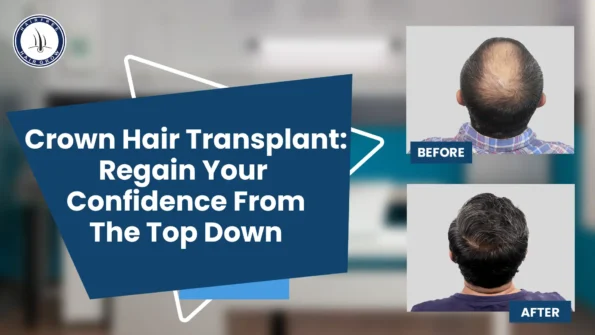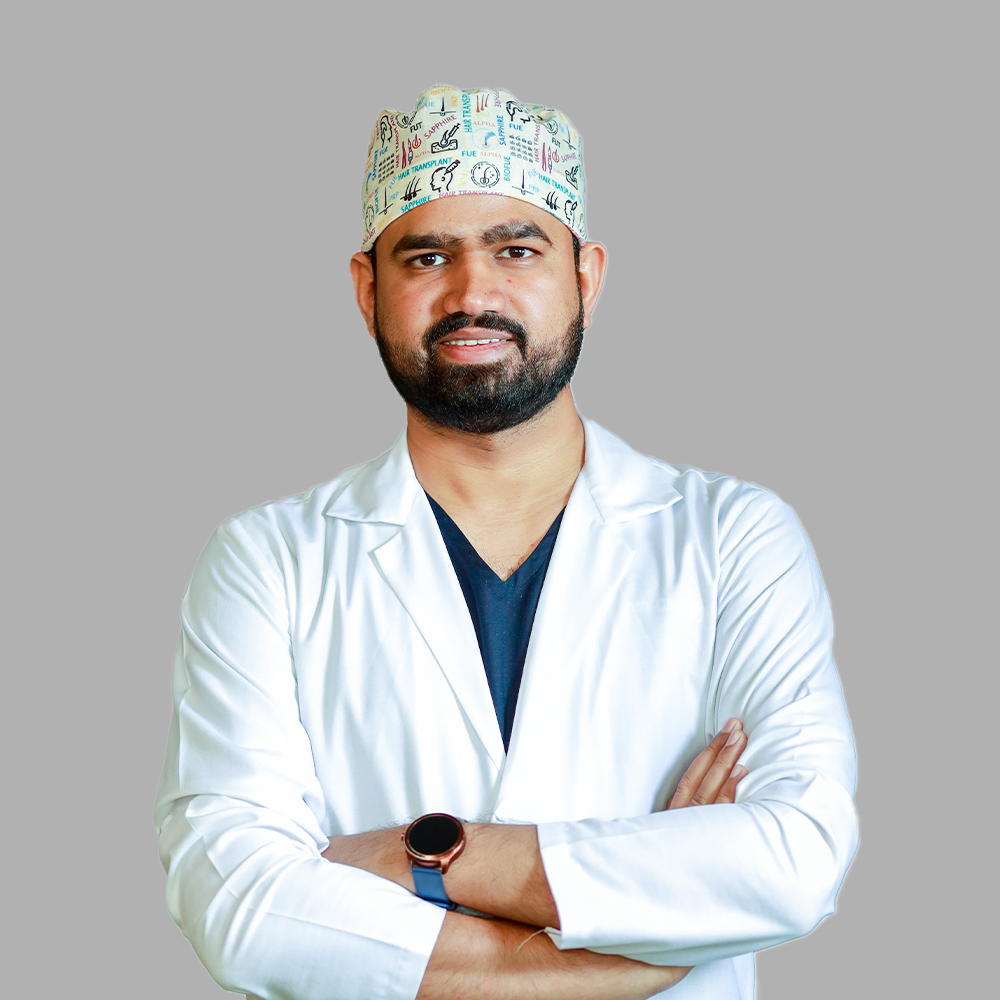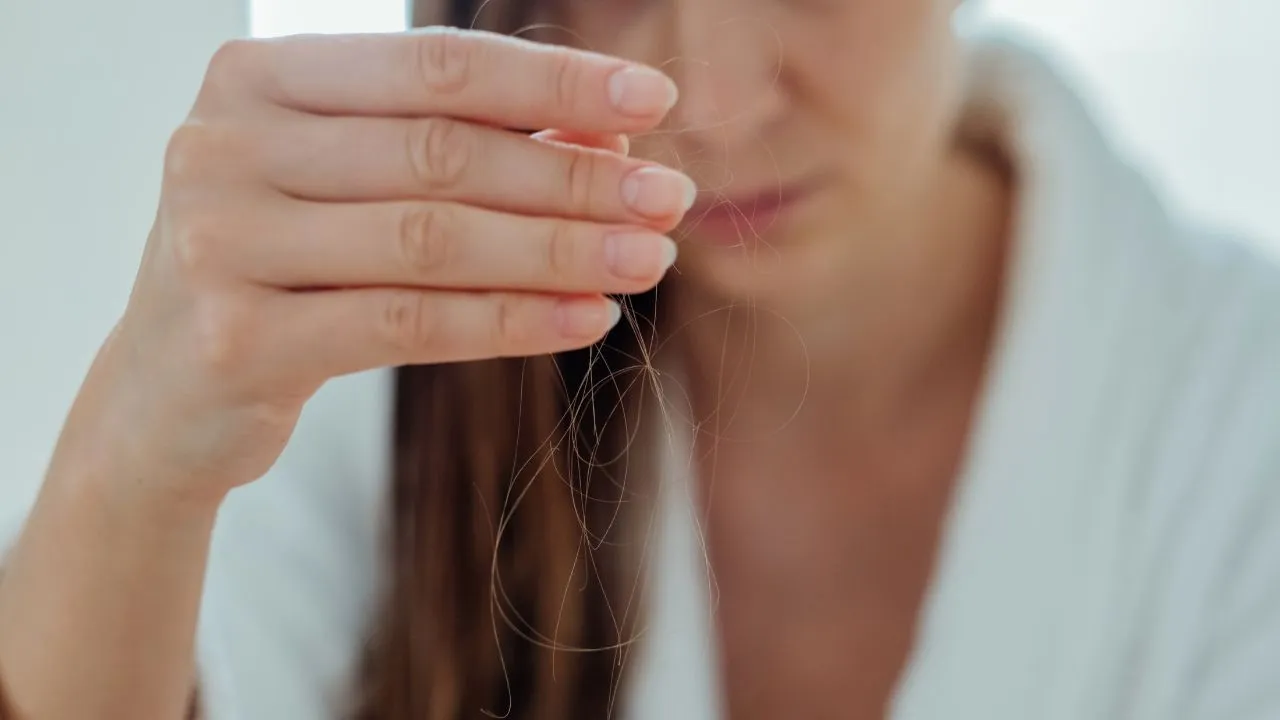Hair loss at the crown or top of your head is a very common experience and many people go through it at some point in their lives. So you are thinking that what is the solution for this then it is a very easy friend’s hair transplant. You may have wondered what hair transplant is and how it is done, so let us know. Crown hair transplant: Everything you need to know about restoring hair in the crown area.
Hair transplant surgery can be performed on the crown by transferring excess hair from the back and sides of the scalp to restore hair to bald areas. There are many other treatments that help prevent hair loss on your scalp and crown.
So today we will talk about the available treatments on how to recover crown hair.
What is the Hair Crown?
The crown of your hair is basically the highest part of your head, kind of like the tippy top. The hair growing there swirls around in a circle, like a mini vortex. This swirly bit is called a hair whorl. Some people even have two whorls up there, which is totally normal and just means their hair swirls in two different spots!
Can You Get A Hair Transplant on The Crown Area?
Yes! You can definitely get a hair transplant for the crown area. They take hair from the back or sides of your scalp and move it to the balding crown. It’s a great solution for bald spots and thinning hair on the top of your head.
Crown Hair Transplant Success Rate
Crown hair transplants have a success rate of over 95%, making them highly effective. Although results take longer to fully show compared to other types of hair transplants.
To ensure a successful hair transplant, you should consider:
- Choosing an experienced surgeon
- Using proper techniques
- Considering the extent of hair loss
Success in hair transplantation greatly depends on these factors.
Best Techniques for Crown Hair Transplant
When someone needs a hair transplant on the top of their head, there are various ways to do it. Some of the best methods are called BIG FUE, FUE and DHI. These methods are good because they cause less scarring, less pain and better results.
The top of your head has hair that grows in circles or whorls. When we grow new hair, we make sure to keep it in the right direction so that it looks like it is growing naturally.
Risks of Crown Hair Transplant
When considering a crown hair transplant, it is important to acknowledge the slight potential risks that may be involved. Although rare, these risks should be considered before making a decision.
Prolonged Bleeding
Sometimes people may bleed a little after surgery, but it is not common to bleed profusely for a long time. Skilled surgeons know how to ensure this does not happen again and again.
Infection
Sometimes, after a hair transplant, there can be germs that make you sick. But don’t worry, doctors have a special medicine called antibiotics that can help get rid of the germs. It is really important for the doctor to perform the hair transplant in a very clean and safe place and to be really good at what they do. This way, they can help prevent any germs from getting in and causing infection.
Scarring
Having thick skin on the top of your head increases your chances of scarring from a hair transplant. But if the doctor uses the right techniques, they can reduce your chances of scarring.
Am I a Good Candidate for a Crown Hair Transplant?
Thinking about getting your hair back on the crown? Here’s a quick guide to see if a crown hair transplant is right for you:
- Baldness or Hair Thinning on the Crown Area
- Patient’s Age
- Donor Area Availability
- Good Overall Health
- Realistic Expectations
If you think you might be a good fit for a crown hair transplant, the next step is to consult with a qualified hair transplant surgeon. They can assess your individual situation and discuss the best course of action for you.
Recovery and Aftercare
Recovering after your crown hair transplant is surprisingly quick and easy, all thanks to the gentle techniques used during the procedure. In just two to three days, you can jump back into your daily routine if you’re eager to get moving again.
To ensure your healing is as smooth as possible, here are some simple aftercare tips to keep in mind:
- Rest on your back with your head slightly elevated
- Avoid any strenuous activities for at least 2-3 months
- Shield your scalp from direct sunlight
- Take a break from smoking and drinking for at least 2 months
- Carefully adhere to the post-surgery guidelines provided
By following these suggestions, you can help your body bounce back quickly after your crown hair transplant and get back to feeling your best!
Written By
MD (Skin & VD)
Dr. Kiran Chotaliya is a specialist in Crown Hair Transplant procedures, offering expert solutions for restoring hair in the crown area. With extensive experience, Dr. Chotaliya provides patients with effective treatments for achieving fuller, natural-looking hair.
Disclaimer
We’ve made all possible efforts to ensure that the information provided here is accurate, up-to-date and complete, however, it should not be treated as a substitute for professional medical advice, diagnosis or treatment. See Detailed Disclaimers Here.





